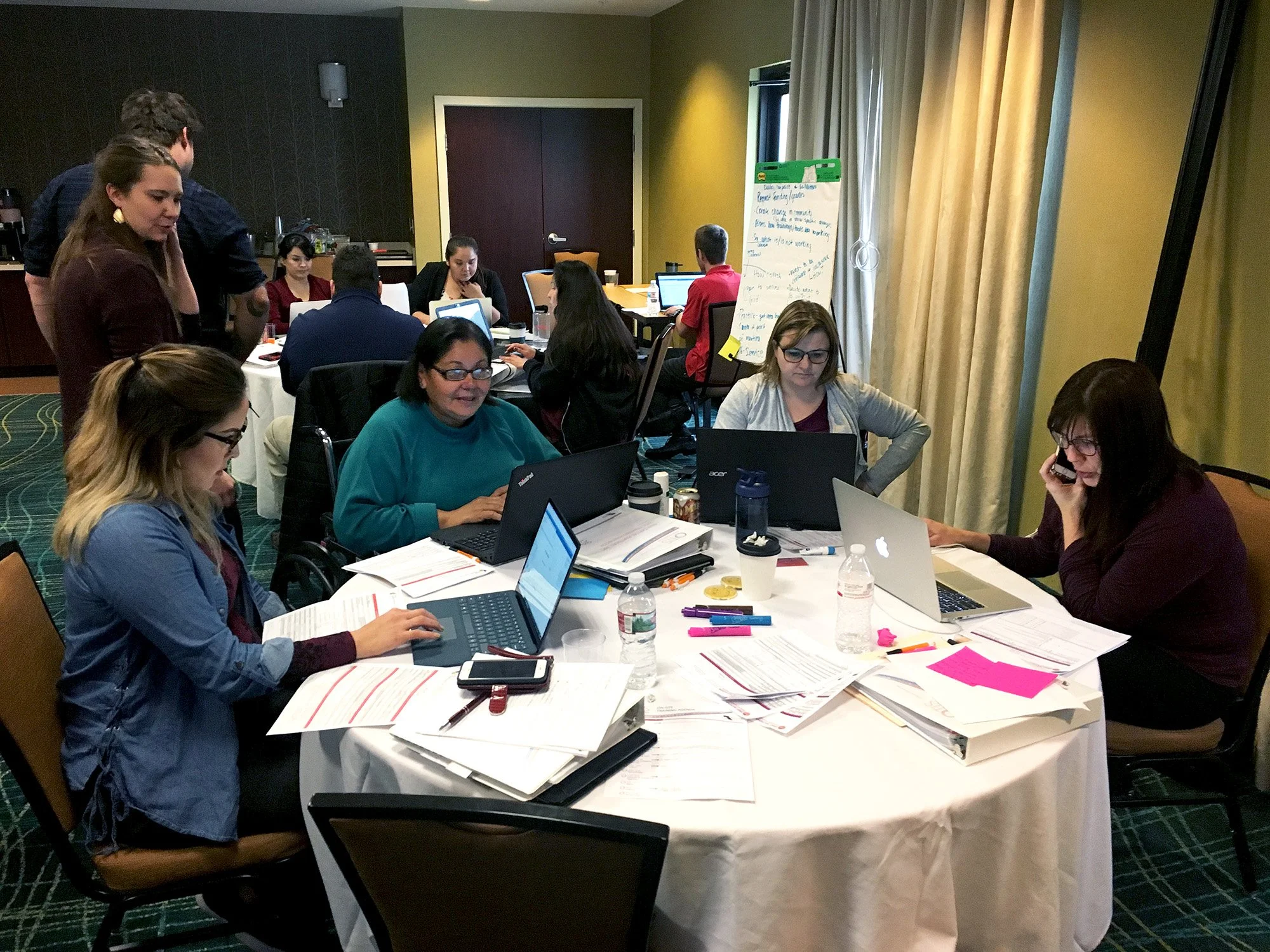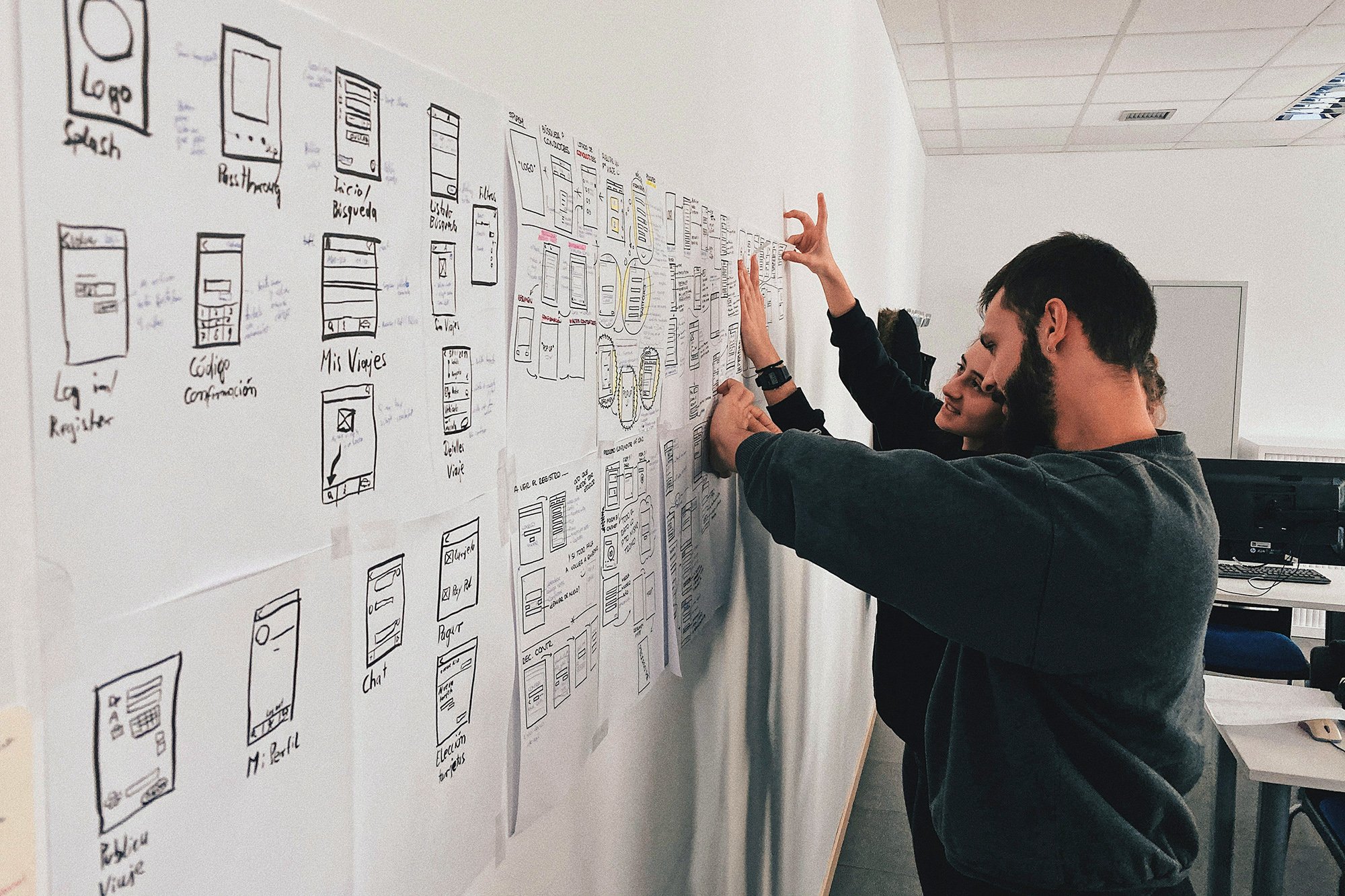Native nonprofits deserve tech partners who truly understand their work
Staff members at Thunder Valley Development Corporation during technical assistance and database training in Porcupine, South Dakota.
For Native nonprofits — especially Native CDFIs — data systems are essential supports for sovereignty. Data can strengthen relationships with funders, guide strategic decision-making, and demonstrate the meaningful impact nonprofits are creating in their communities. When grounded in culture and aligned with organizational strengths, these systems can significantly grow capacity and empower teams.
Native-serving organizations bring deep knowledge, resilience, and dedication to their missions, but many data systems have been designed without fully honoring that expertise or recognizing the unique ways Native organizations operate. As a result, systems are overly complex and create more problems than they solve. By centering community perspectives and practical needs, data tools can become a vital source of support, clarity, and confidence — not a burden.
Beware of the empty sales pitch
Some data system platforms market themselves as “easy-to-use” but limit how users can actually access, analyze, or share their data. Maybe this has happened to you: A vendor shows you user-friendly dashboards, drag-and-drop report builders, and pre-built templates featuring loan status, client demographics, and repayment data. But when your team tries to compare rates by region, filter by grant cycle, or export the raw data for a funder report, you hit roadblocks. You need special permissions, or you can’t add the right filters, or even with admin rights, you can’t access your own historical data without support tickets or extra fees.
We’ve seen how limitations like this have real consequences for Native nonprofits. Not only do they take time away from mission-driven work, they restrict access to the very data organizations need most. For example, Niimiipuu Fund and Four Bands Community Fund both invested time and resources into systems that ultimately created barriers to data access. In both cases, we helped them transition to a Salesforce-based solution that brought client intake, internal workflows, and funder reporting together in one place. This shift created much stronger alignment between the technology and the day-to-day work of serving their communities.
When evaluating data systems and service providers, it’s important to spot potential red flags that aren’t immediately obvious. Some tools or vendors may seem effective at first glance, but over time, you may find that they actually limit flexibility and overlook critical services.
What to avoid:
The platform pushes a rigid, pre-set workflow that doesn’t allow customization for your loan products, client services, or reporting needs.
They use language, metrics, or frameworks that don’t reflect Native values or community realities, such as focusing on credit scores and ignoring informal economies.
The system is built only for transactional data and doesn’t allow you to track coaching, TA, outreach, or casual interactions.
They assume staff and clients always have reliable internet and technology expertise.
Their system can’t support complex or overlapping reporting for multiple funders like CDFI Fund, HUD, or private foundations.
You don’t have full control over your own data, including how it’s stored, accessed, or used by third parties.
Basic features like exporting data or building custom reports require expensive upgrades.
The vendor has never worked with Native CDFIs, nonprofits, or clients with similar values or challenges.
Finding the right technology partner
When Native CDFIs and nonprofits are choosing a technology partner, the relationship matters as much as the tools. The right partner will prioritize listening and understanding, and take the time to learn about the organization’s mission, capacity, and values. They’ll offer clear communication, and most importantly, stay involved long after the system is built.
What to look for:
A partner who listens deeply, respects tribal sovereignty, and understands the importance of relationship-based work.
Someone who centers your voice and builds solutions around your workflow — not force you to adapt to theirs.
Provides clear timelines, upfront pricing, and honest answers about what's possible and what’s not.
A partner who empowers your team through documentation, training, and tools that let you manage your own system over time.
A partner who respects that the data belongs to your organization and community and puts local control first.
Someone who can build a solution that grows with you as you expand your services, team, and impact.
Has hands-on experience with Native or rural communities like yours.
When a data system is built with care and long-term support, it can strengthen community voice and reinforce the values that guide the work. For Native nonprofits, this means working with partners who understand the unique challenges and strengths of Indigenous communities and know how to build systems that support sovereignty and growth. Lastly, technology isn’t a one-time fix. The strongest systems are those that evolve with your organization over time and adapt to new challenges. In the end, your data system should be built around trust, accountability, and a holistic understanding of what success means to you.
Share







